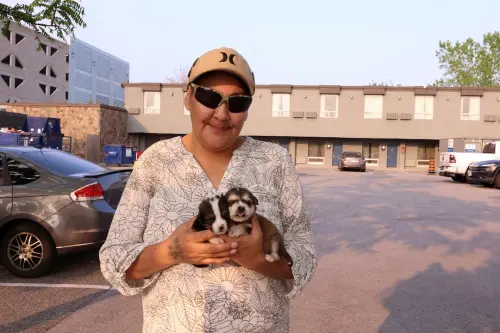Introduction
In late May, wildfires in northern Manitoba prompted a massive evacuation of residents from the Mathias Colomb Cree Nation reserve, known as Pukatawagan. The situation has worsened across Canada, with thousands of individuals displaced as fires continue to rage.Context
Since May, a series of wildfires have swept across Canada, leading to the evacuation of over 30,000 people from three provinces, including those fleeing into the United States. The impact of these fires is particularly severe on Indigenous communities, which, despite constituting only about 5% of the Canadian population, are disproportionately affected.Manitoba has been grappling with the challenges of evacuation, reporting over 21,000 registered evacuees and 28 wildfires, 10 of which are classified as out-of-control. The worst of these wildfires has engulfed more than 700,000 hectares, with the largest blaze near Flin Flon covering 307,000 hectares and remaining uncontrollable.
Developments
Early evacuees initially sought refuge in local community centers and sports facilities, but space constraints have forced officials to relocate them to Niagara Falls, Ontario, which offers ample hotel accommodations. Currently, about 2,000 evacuees from Manitoba and 500 from Northern Ontario are staying in four hotels in the popular tourist area, with more anticipated to arrive.Local leaders are calling on federal and provincial governments to seek alternative shelter solutions as the tourism season approaches. Indigenous leaders have criticized the response from government officials, citing inadequate communication and delays in resource delivery during the crisis.
Residents of Pukatawagan have reported chaotic evacuation experiences. Video footage shared by locals depicted helicopters making emergency landings in their community as flames encroached. Joseph Garry, who managed to evacuate with his family, expressed concern for the safety of children amidst the chaos, while also recounting the fear of waiting for a helicopter as wildfires approached.
Vanessa Hart, a stay-at-home mother and also an evacuee, emphasized the long wait for help, urging that a quicker evacuation could have alleviated trauma and distress experienced by residents.
The agency managing the evacuation, Indigenous Services Canada, noted that emergency response is a shared responsibility and that the primary response typically falls to local authorities. In a statement, they indicated that federal collaboration with First Nations and provincial counterparts is ongoing as the wildfire situation evolves.
Manitoba's government acknowledged the challenges posed by smoky conditions that hindered air support, asserting that planes were grounded but that efforts had been made to provide aerial assistance wherever feasible.
